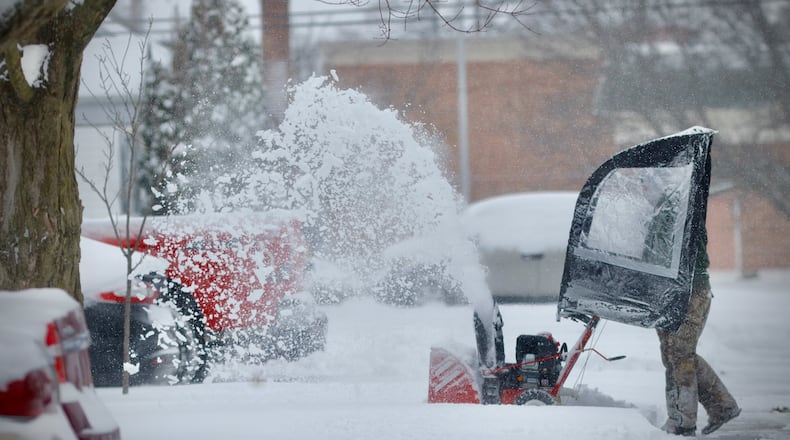“While we’re all getting our workout shoveling driveways, don’t forget our fire hydrants need some love too!” the post reads. “There are a number of Kettering hydrants buried in snow. Please help keep our community safe by clearing snow from fire hydrants near your property. A clear 3-foot radius around hydrants saves precious minutes during emergencies. Your few minutes of shoveling could help save lives.”
While municipalities typically handle the clearing of snow from roads and public right-of-ways, property owners in many communities are responsible for shoveling their sidewalks, and this includes making sure fire hydrants are visible and accessible to first responders.
“A fire can double in size every 60 seconds,” said Rich Morrett, community risk reduction coordinator for the Vandalia Division of Fire. “If we have to take three, four, or five minutes to dig out a hydrant so we can make our connections, that just significantly delayed us and left us way behind the eight ball ... It’s extremely important that people help clean out those hydrants for us.”
Credit: Submitted
Credit: Submitted
Morrett also encourages residents to take steps within and around their homes to help prevent a fire from happening in the first place.
According to the National Fire Prevention Association, heating is one of the top causes of home fires and home fire injuries in the US, and third leading cause of home fire deaths. December, January and February are the peak months for heating fires.
The NFPA recommends portable generators be kept outside, away from windows, and as far away from the home as possible.
Flammable materials should be kept at least three feet away from things like portable space heaters, fireplaces, wood stoves, and radiators, and ovens should not be used to warm your home.
“It’s also important to maintain your furnace vents; if those vents are on the side of your house, make sure when we get these large amounts of snow that they don’t get snowed in,” Morrett said. “This shuts your furnace down then you could have some carbon monoxide issues.”
The NFPA recommends all households have carbon monoxide alarms installed and tested at least once a month.
About the Author

